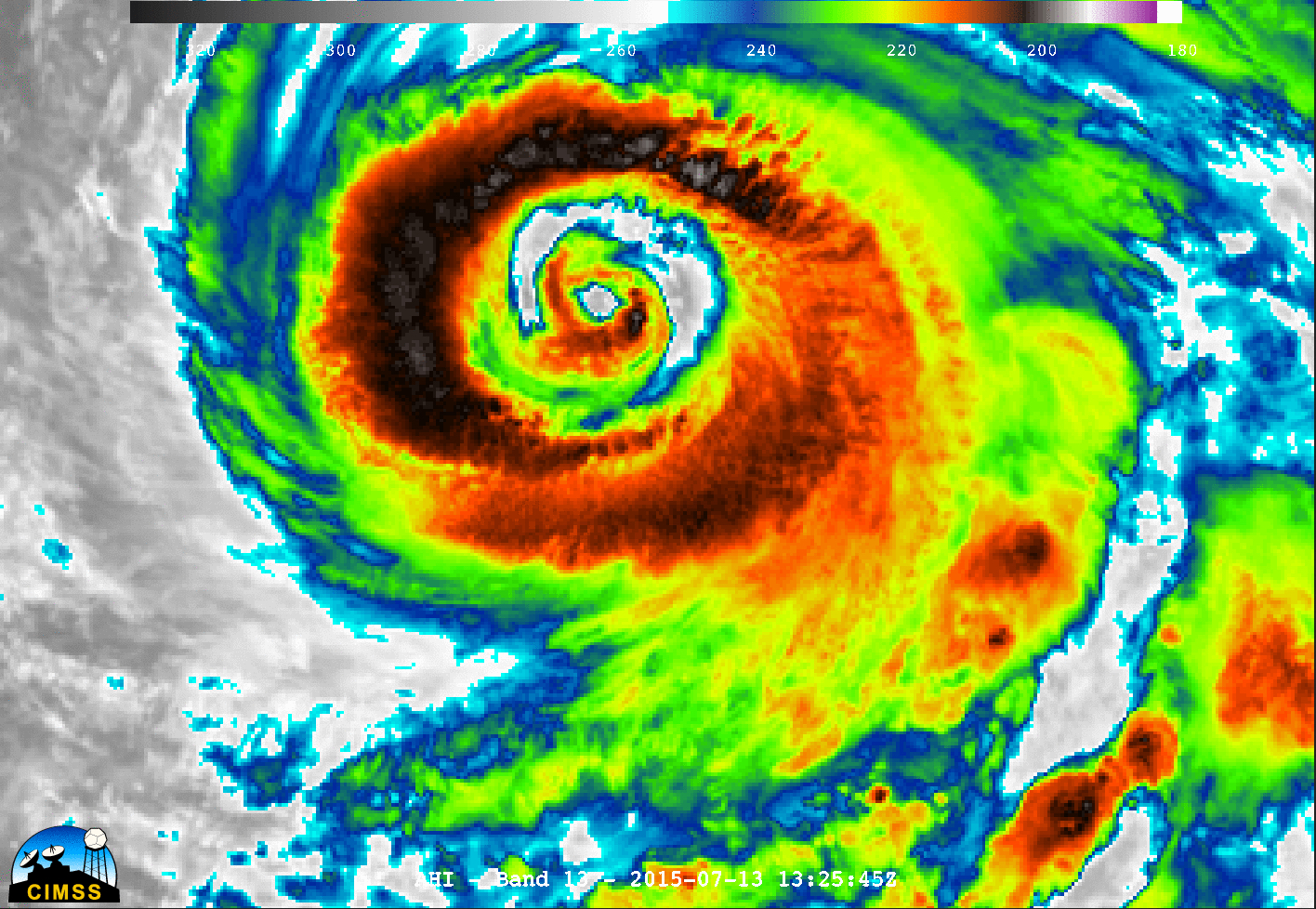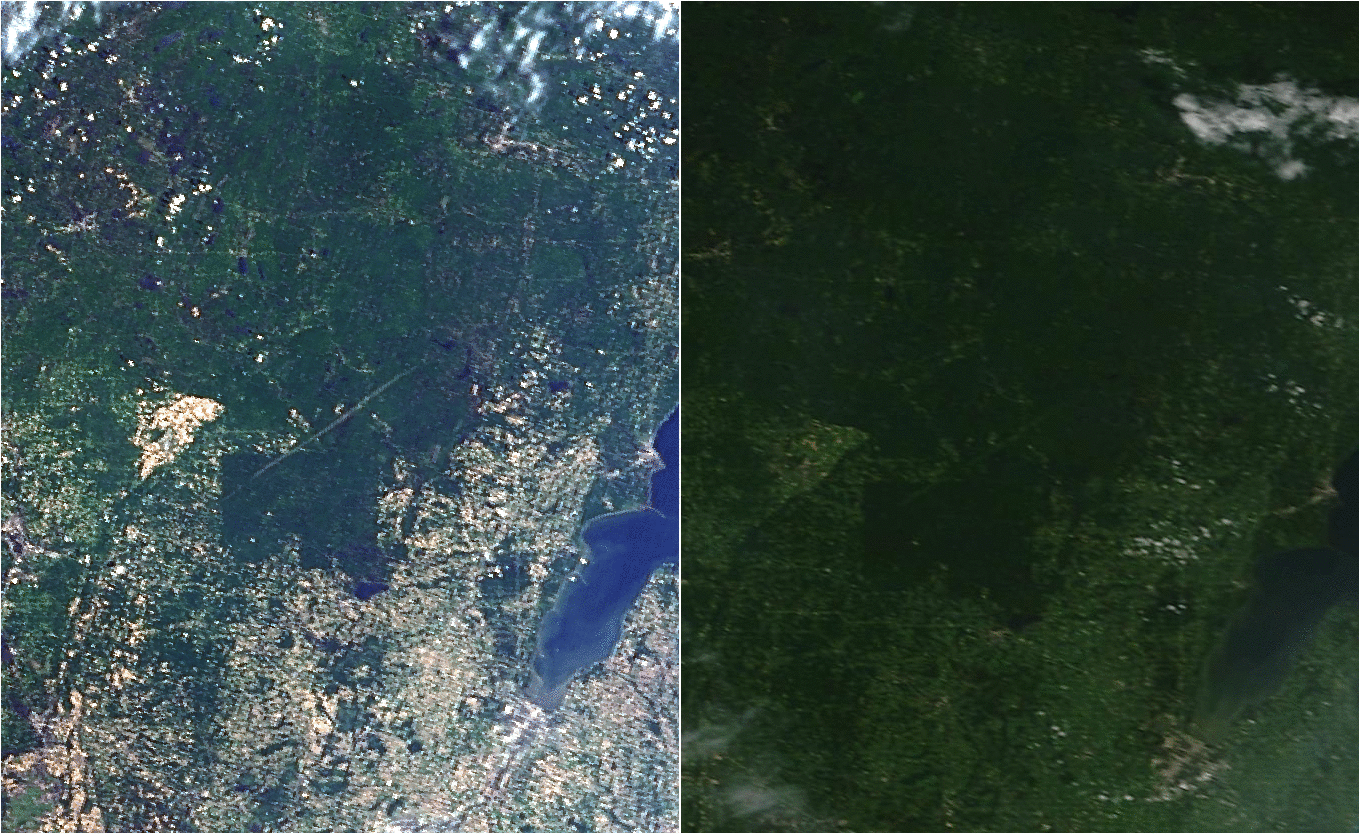
On 07 June 2007, severe thunderstorms moved through the Upper Midwest (blog post on that event), spawning strong tornadoes; from the SPC Storm Reports comments:HUNDREDS OF TREES DOWN NORTH OF ZOAR. (GRB) NUMEROUS TREES DOWN OF 1 FOOT DIAMETER AND GREATER. TRACK WAS APPROXIMATELY 1/4 MILE IN LENGTH AND 125 YARDS WIDE (MQT)Terra MODIS data on 09 June 2007 (in the image... Read More
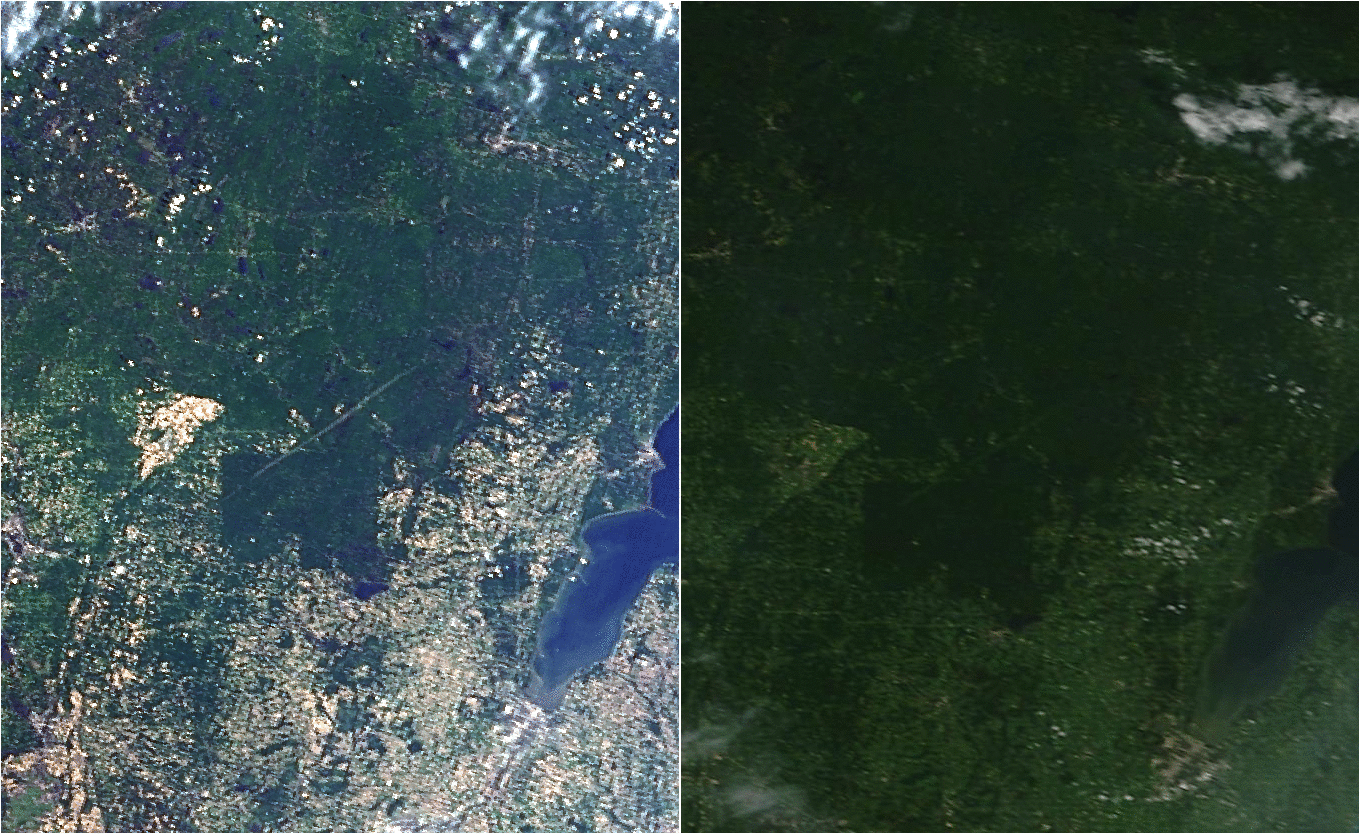
MODIS True-Color Image, June 9, 2007 (left) and July 15, 2015 (right) (click to enlarge)
On 07 June 2007, severe thunderstorms moved through the Upper Midwest (blog post on that event), spawning strong tornadoes; from the SPC Storm Reports comments:
HUNDREDS OF TREES DOWN NORTH OF ZOAR. (GRB)
NUMEROUS TREES DOWN OF 1 FOOT DIAMETER AND GREATER. TRACK WAS APPROXIMATELY 1/4 MILE IN LENGTH AND 125 YARDS WIDE (MQT)
Terra MODIS data on 09 June 2007 (in the image above, at left) showed a tornado scar (much longer than 1/4 mile in length) running southwest-to-northeast through heavily forested Menominee County into Langlade County and then Oconto County in northeast Wisconsin. Terra MODIS True-Color imagery from 15 July 2015 (also in the image above, at right) (cropped from imagery at the MODIS Today website), shows that a scar persists more than 8 years later! (This persistent scar has been mentioned before on this blog here in 2009 and here in 2011).
Landsat-8 overflew northeast Wisconsin on 15 July 2015, at nearly the same time as the Terra MODIS imagery above, and those views, captured via SSEC‘s RealEarth are shown below. The scar is more evident in the shortwave infrared (Band 6, 1.61 µm) than the visible (Band 3, 0.56 µm) because the shortwave infrared channel is more sensitive to changes in vegetation. Lakes are also far more apparent in the 1.61 µm imagery because water absorbs 1.61 µm radiation; little is scattered back to the satellite for detection and water therefore appears black.
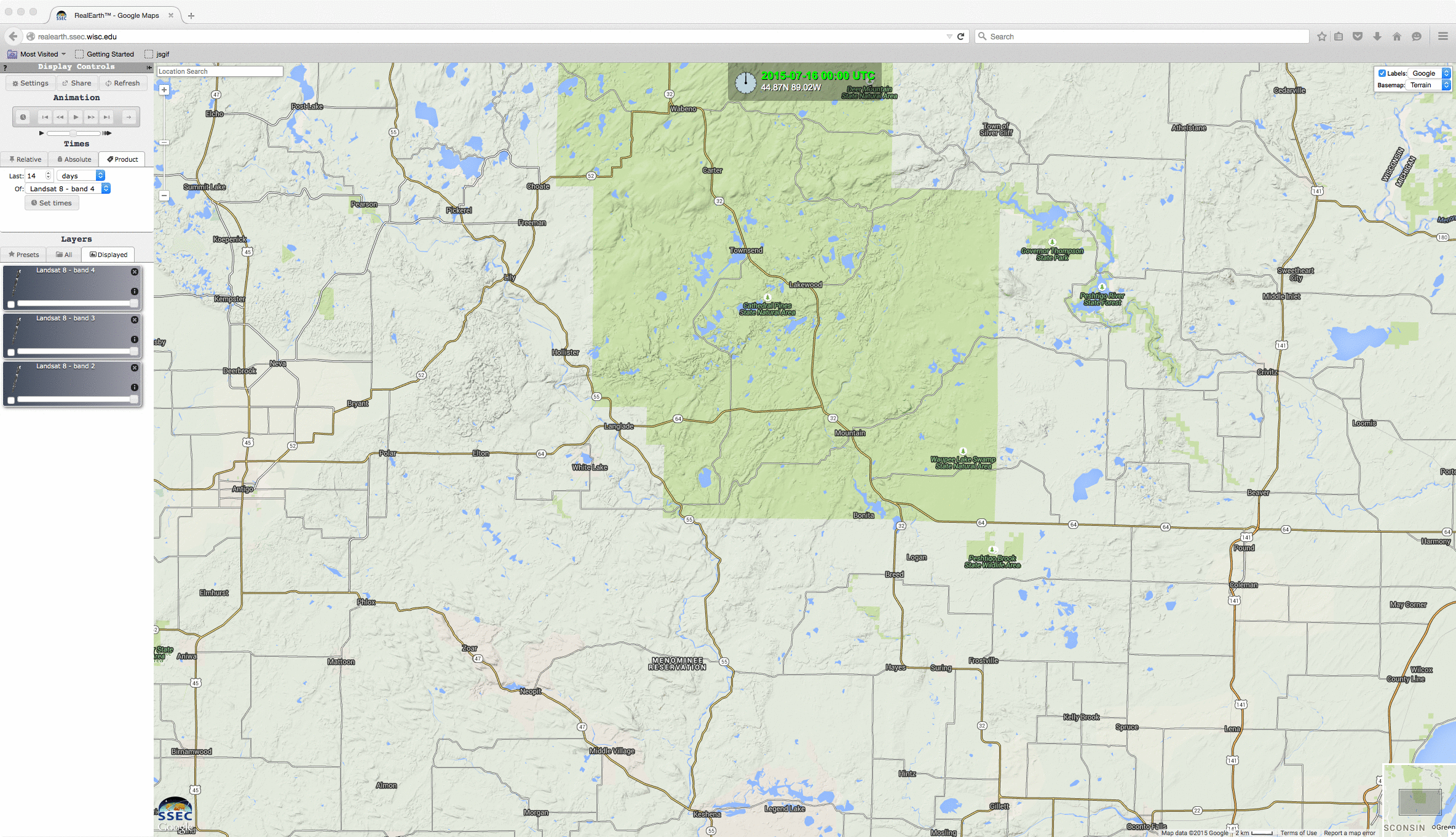
Landsat-8 band 3 and Band 6 imagery, ~1640 UTC July 15, 2015 (click to enlarge)
===========================================================In April 2011, an historic tornadic event occurred over the Deep South that spawned numerous strong long-track tornadoes (
blog post). The tornado paths from this event were also visible from both MODIS and GOES imagery (
Link). The animation below shows MODIS true color imagery from before the tornadoes, from several days after, and from early May this year. Three distinct tornado scars remain in Alabama: One runs from Tuscaloosa to Birmingham, a second is south of Tuscaloosa, and a third is north of Tuscaloosa.

MODIS True-Color Imagery over Alabama, 13 April and 29 April in 2011 and 01 May in 2015 (click to enlarge)
View only this post
Read Less


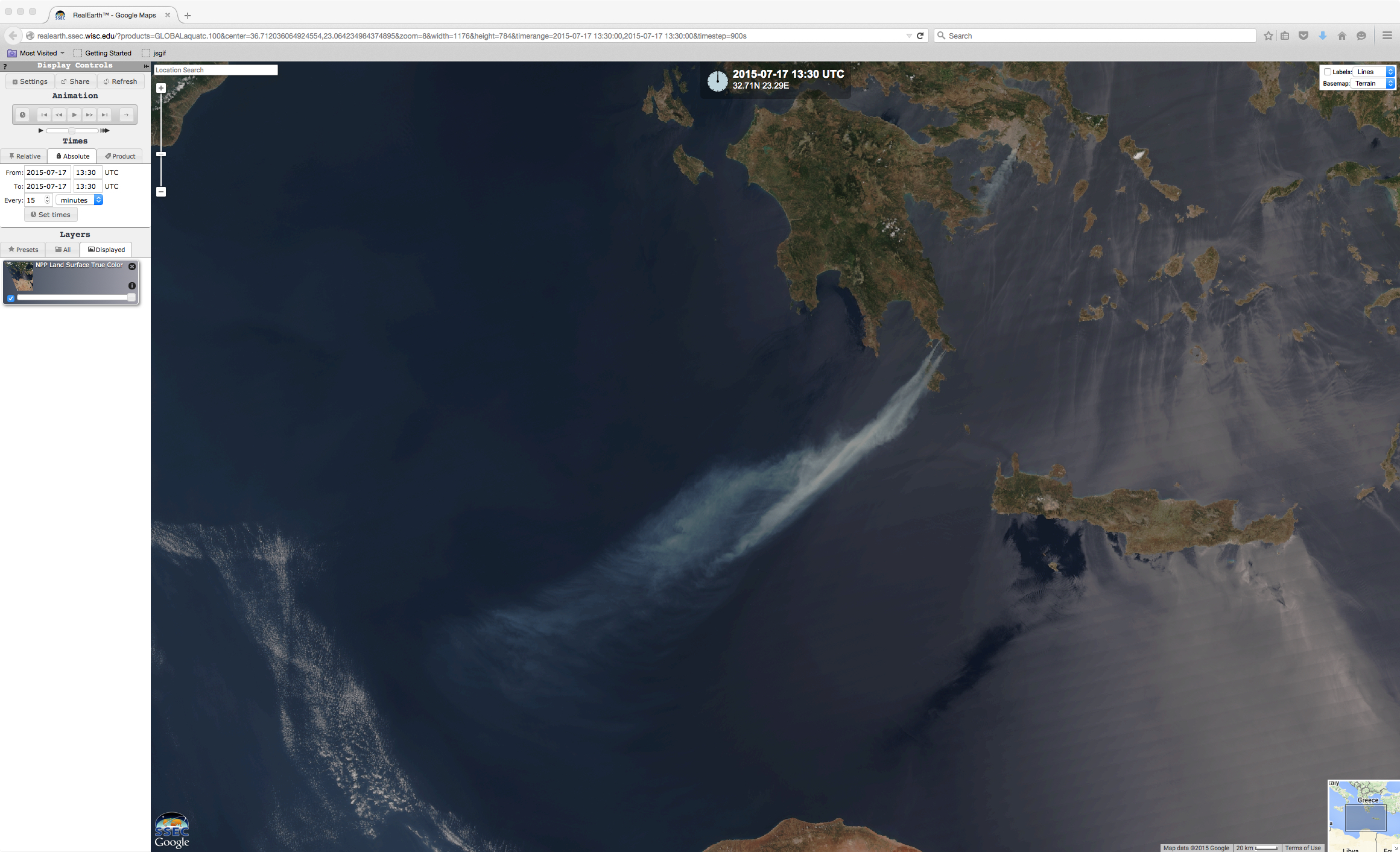
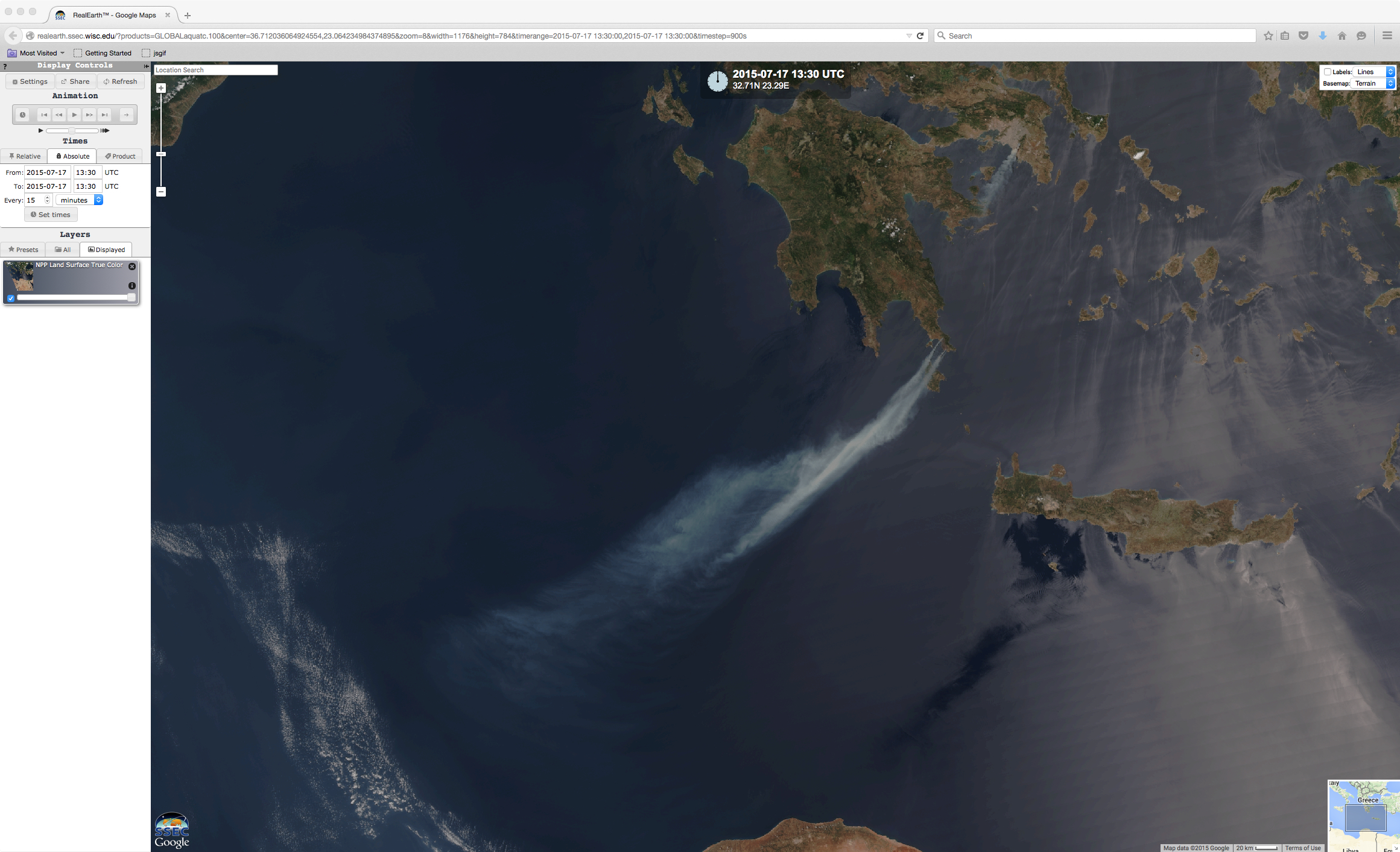

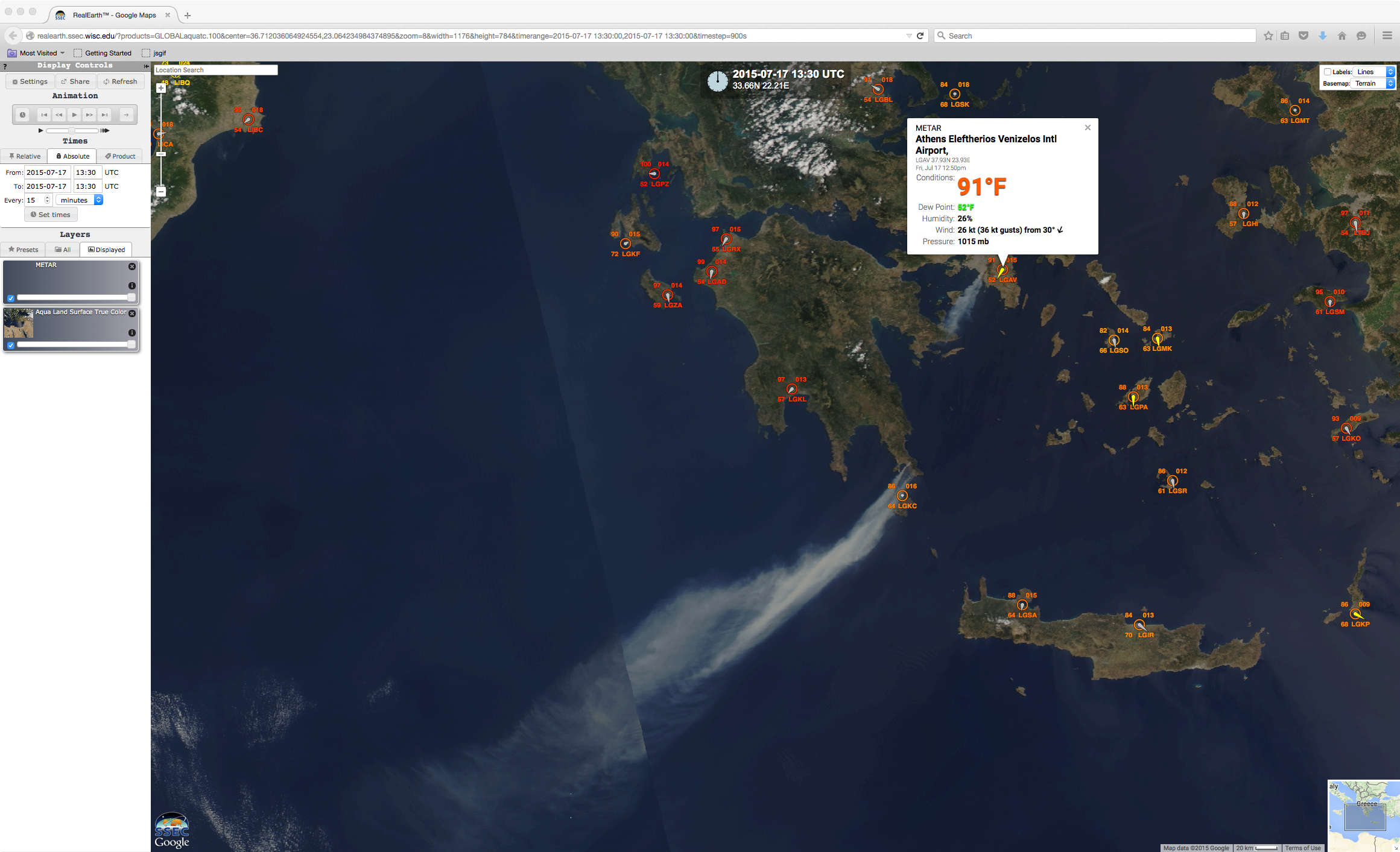
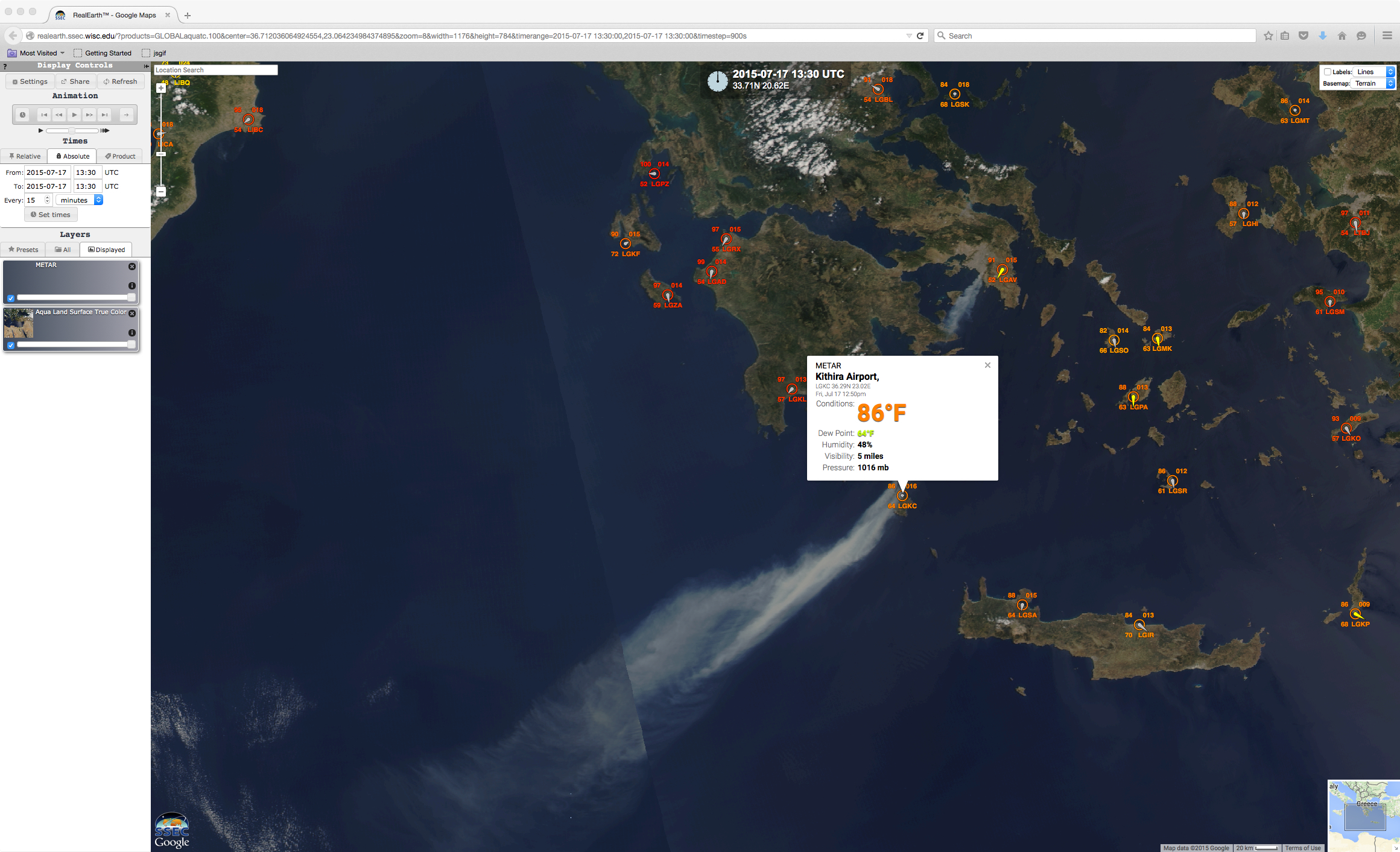




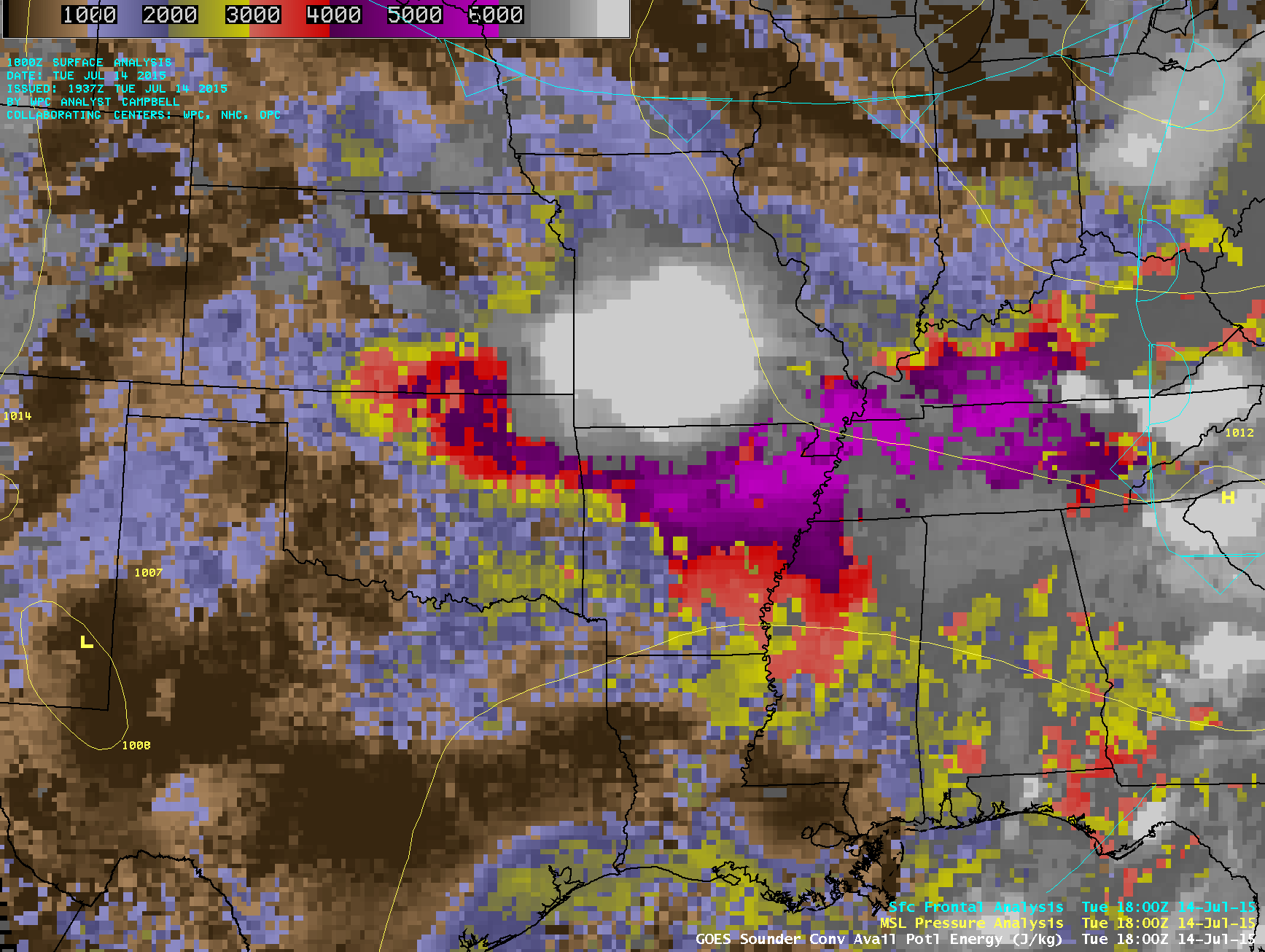
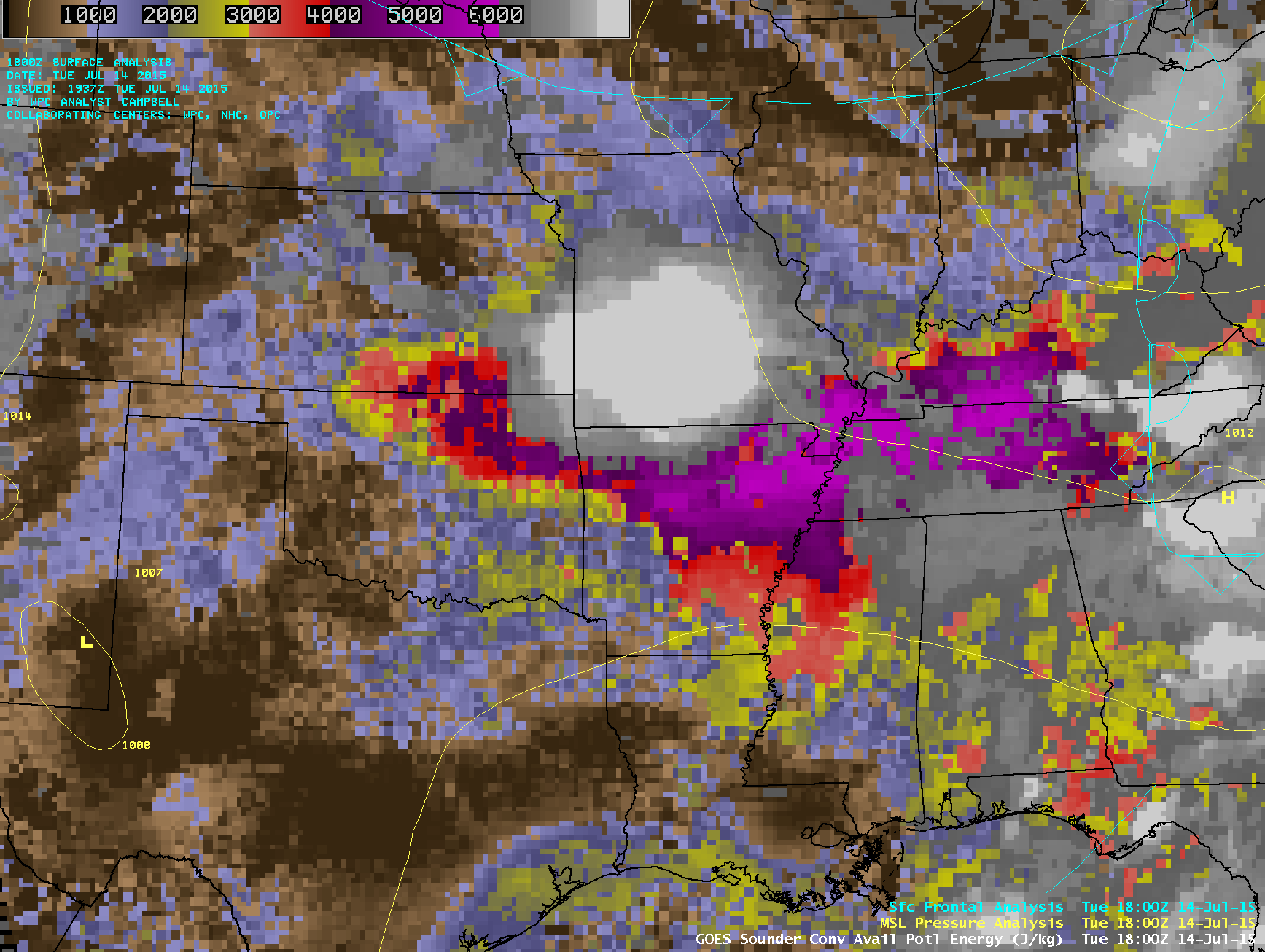
![Terra MODIS 0.65 µm visible channel and 11.0 µm IR channel images (with SPC storm reports) at 1657 UTC [click to enlarge]](https://cimss.ssec.wisc.edu/satellite-blog/wp-content/uploads/sites/5/2015/07/150714_1657utc_terra_modis_visible_ir_MCS_anim.gif)
![Suomi NPP VIIRS 0.64 µm visible channel and 11.45 µm IR channel images (with SPC storm reports) at 1851 UTC [click to enlarge]](https://cimss.ssec.wisc.edu/satellite-blog/wp-content/uploads/sites/5/2015/07/150714_1851utc_suomi_npp_viirs_visible_ir_MCS_anim.gif)
![POES AVHRR 0.86 µm visible channel and 12.0 µm IR channel images (with SPC storm reports) at 1916 UTC [click to enlarge]](https://cimss.ssec.wisc.edu/satellite-blog/wp-content/uploads/sites/5/2015/07/150714_1916utc_poes_avhrr_visible_ir_MCS_anim.gif)



